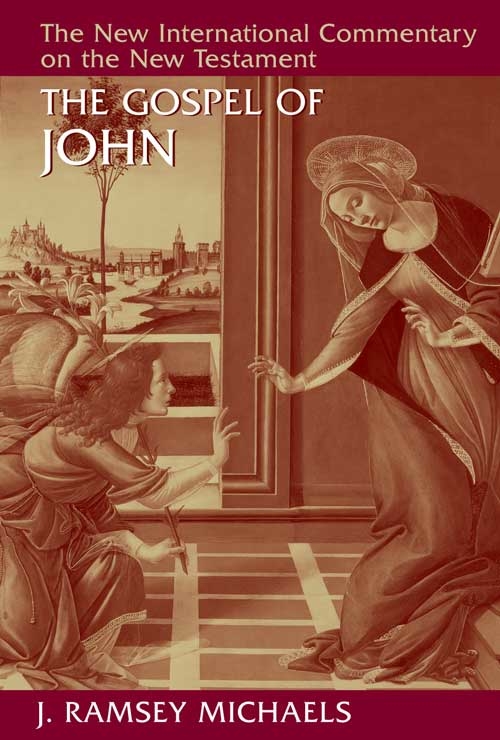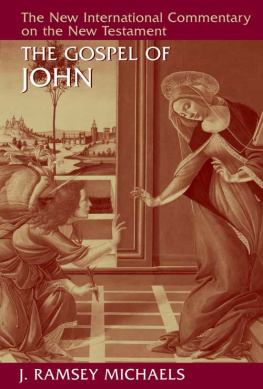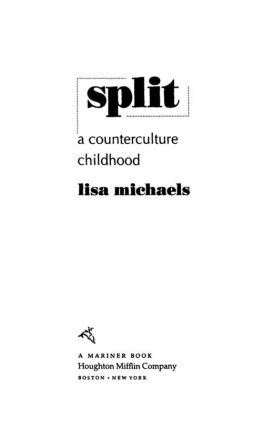
The Gospel of
JOHN
J. RAMSEY MICHAELS
W ILLIAM B . E ERDMANS P UBLISHING C OMPANY
G RAND R APIDS, M ICHIGAN / C AMBRIDGE, U . K .
2010 J. Ramsey Michaels
All rights reserved
Published 2010 by
Wm. B. Eerdmans Publishing Co.
2140 Oak Industrial Drive N.E., Grand Rapids, Michigan 49505 /
P.O. Box 163, Cambridge CB3 9PU U.K.
Library of Congress Cataloging-in-Publication Data
Michaels, J. Ramsey.
The gospel of John / J. Ramsey Michaels.
p. cm.(The new international commentary on the New Testament)
Includes .
eISBN 978-1-4674-2330-4
ISBN 978-0-8028-2302-1 (cloth: alk. paper)
1. Bible. N.T. JohnCommentaries. I. Title.
BS2615.53.M53 2010
226.5077dc22
2010013943
www.eerdmans.com
Contents
I take great pleasure in introducing this commentary on Johns Gospel to the larger Christian community of scholars and students. In one of my earliest years in the role of editor of this series, I had opportunity to visit Professor Leon Morris at his home in Melbourne, New South Wales, who was at that time in his ninetieth year. He agreed to work on a revision of his commentary that had first appeared in 1971. The revised edition appeared in 1995. But for a number of reasons the revision turned out to be much more cosmetic than substantial. So after his passing, I approached my former colleague and long-time friend, J. Ramsey Michaels, as to whether, in keeping with what was happening elsewhere in the series, he would like to offer a replacement volume. The present superb exposition of the Gospel of John is the end product of his agreeing to do so.
It is a special personal pleasure to welcome Ramseys contribution to this series, since our own relationship dates to 1974 when Andrew Lincoln and I joined him and David Scholer on the New Testament faculty at Gordon-Conwell Seminary in Massachusetts, where the four of us (and our spouses) spent five wonderful years together. I had taught the Gospel of John at Wheaton College before moving to Gordon-Conwell, and it was this move that also shifted my primary New Testament focus from John to Paul, since the Johannine material was in Ramseys very good hands. So I owe Ramsey a personal debt of gratitude for this move, which turned out to mark most of the rest of my New Testament career (apart from a commentary on the Revelation due out in 2010).
Whereas one might well question whether the scholarly/pastoral world needs yet another commentary on this Gospel, anyone who takes the time to read or use this work will easily recognize that the answer is yes. Here is a substantial, truly original, work of extraordinary insight and helpfulness to pastor and scholar alike, which should have a considerable life span well after both author and editor have gone to their eternal reward. What the careful reader and user of this commentary will recognize is the large number of insights into this Gospel, which, for want of a better term, must be judged as new. But that does not mean eccentric; rather they are the result of many years of focused laborand lovefor Johns Gospel. I am therefore pleased to commend it to one and all.
G ORDON D . F EE
I am pleased to be a contributor to the New International Commentary on the New Testament. The first general editor of the series, Ned Stonehouse, was my mentor for a year at Westminster Seminary in the 1950s, and the current editor, Gordon Fee, was my colleague at Gordon-Conwell for a decade in the 1970s and 80s. This commentary represents a second effort, building to some extent on the first (1984 and 1989), but attempting a far more detailed exposition of the text. I used to tell my friends that I keep trying until I get it right. The charm of the enterprise, of course, is that one never quite gets it right. Moreover, as I get older I am increasingly conscious of the mortality rate among some who have written on Johns Gospel. Edwyn Hoskynss commentary had to be finished and edited by F. N. Davey (1947), R. H. Lightfoots by C. F. Evans (1956), J. N. Sanders by B. A. Mastin (1968), and Ernst Haenchens by Robert W. Funk and Ulrich Busse (1980). Yet I am encouraged by the example of C. H. Dodd, who completed his first great work on the Gospel of John, The Interpretation of the Fourth Gospel, in 1953 at the age of 69, and his second, Historical Tradition in the Fourth Gospel, ten years later.
It may help readers to know from the start what this commentary will provide and what it will not. First, I have not begun to monitor all the publications on the Gospel in the seventeen years that have passed since I first signed the contract with Eerdmans (I may even have missed a few from before that!). Rather, I have tried to immerse myself in the text itelf, while interacting repeatedly with the major commentators, past and present, such as Bultmann, Schnackenburg, Brown, and Barrett (the first tier, more or less), and a number of others whose work I have used a great deal, including Leon
Second, I have not spent a great deal of time on the background of the Gospel (whatever that might mean), whether in Judaism, Hellenism, Hellenistic Judaism, Qumran, Gnosticism, or whatever. It is customary to do this in relation to the Gospel of John but not to any great extent in relation to the other three Gospels, because of the assumption that this Gospel somehow has a unique background not shared by the others. I am not so sure that this is true. I am more sure that its background, like that of all the Gospels, is mixed, that its main ingredients are the Jewish Bible, Second Temple Judaism (both Palestinian and Hellenistic), and primitive Christianity, and that the interpreter should have an eye open for relevant parallels (be they background or foreground) in Gnosticism as well. Background, to my mind, is better assessed in relation to particular passages than in generalities.
Third, and consequently, I have kept the Introduction relatively short, at least in relation to the size of the commentary as a whole. Not only the Gospels historical and cultural background, but its use of sources, its relationship to other Gospels and other New Testament documents, its literary style, its christology and theology, all of those issues are as well, or better, addressed as they come up in connection with the relevant texts than at the outset, before one has even started reading. Leon Morriss introduction ran to almost sixty pages, Raymond E. Browns to well over a hundred,Craig Keeners to 330 pages! Yet, by contrast, Bultmanns commentary in German had no introduction at all, and when Walter Schmithals added one for English readers in 1971, it took up a modest twelve pages! So I will not apologize for a comparatively short introduction centered largely on the question of authorship. In any event, I have always suspected that the so-called Introduction should come after the Commentary proper, not before. I wrote it last, and it would not be a bad idea to read it last.
Finally, I have given the priority to understanding the text in its present form, just as it has come down to us, rather than tracing the history of how it came to be. The sources of Johns Gospel, whether one or more of the other Gospels, the oral traditions behind them, or a putative Signs Source, or Revelation Discourse, are of secondary interest, often consigned to footnotes. I do not assume that something in the Gospel which is there by default, as it were, having been taken over from an earlier source, is necessarily less important to the writer than the editorial work the writer has brought to it. In the current jargon, the approach taken here is synchronic, not diachronic. I have assumed that the Gospel of John as we have it is a coherent literary composition, and I have attempted to read it as sucheven while alerting the reader to the supposed difficulty of doing so in certain places. Sometimes I am asked, Does the Gospel of John put words in Jesus mouth? My answer, which will become evident in the Commentary, is Perhaps so, though not as often as some might think, and when I conclude that it does, my job as a commentator is to leave them there.
Next page








